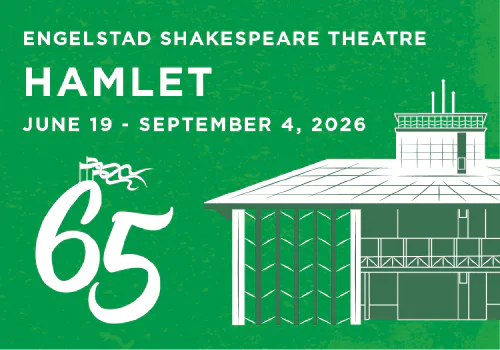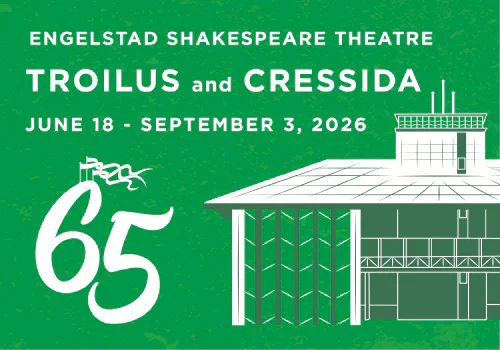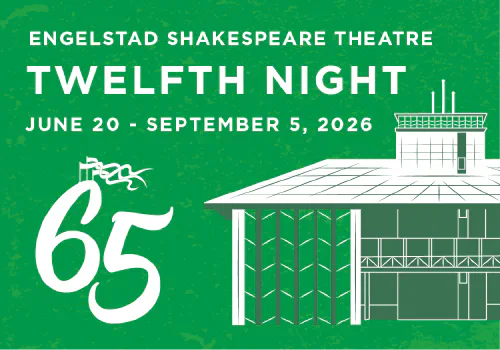By Cheryl Hogue Smith
One of Shakespeare’s least-loved and least-often produced plays, All’s Well That Ends Well follows the story of a young maid, Helena, who strategizes to secure a noble husband, gain rightful entrée into their marriage bed, and, thus, assume her legitimate position as his wife. With many of the major players assisting Helena with her quest, the play may seem to have little dramatic suspense; however, the enjoyment of watching the play is in seeing Helena’s machinations bear fruit. Contributing to that enjoyment is Shakespeare’s sophisticated use of rhyme to cleverly remind the audience and readers that Helena is the master manipulator of key events in the play as she marries, tricks, and, ultimately, “tames” Bertram.
Rhyme is one of the most important rhetorical devices that Shakespeare employs in many plays to enhance what actors say onstage, and, in concert with the action performed on stage, it can dramatically influence an audience’s reaction to the play. In this case, of the 2,807 linesin All’s Well that Ends Well, only 265 (9.4 percent) end in rhyme. (All line/rhyme counts and quotations are from The Pelican Shakespeare: All’s Well that Ends Well, Penguin, 2019.) Yet, as we shall see, these few rhyming lines appear at crucial moments in the plot, most often revealing Helena’s mastery of the play’s action.
Unsurprisingly, then, Helena speaks the most rhyme of any character in the play (43.4 percent). Plus, she is the character who first introduces rhyme to the play when she speaks 100 percent of the fourteen rhyming lines that appear at the end of 1.1 (lines 214–227), thereby delivering an atypical sonnet with an AA BB AA CC DD EE FF rhyme scheme. In this sonnet, she complains about how her lower status prevents her from marrying Bertram and devises a plot to cure the King of his illness so he will grant her wish to marry Bertram. As audiences listen to this atypically structured sonnet, they can’t help but experience how perfectly the play is forecast and represented in the lover’s complaint expressed in the sonnet.
Rhyme is also crucial in 2.1, a pivotal scene in theplay. This scene has 211 lines, of which 82 (38.9 percent) rhyme. The first part of 2.1 begins in blank verse as the King, Lords, Bertram, and Parolles discuss the war in Italy. At line 100, the ailing King agrees to meet with Helena because Lafew vouches for her “wisdom and constancy” as a healer (line 85). After 23 lines of dialogue between the King and Helena, the King slips into rhyming dialogue as he starts to believe that Helena just might be successful where every other doctor has failed thus far. After all, Helena says, “What I can do can do no hurt to try/ Since you set up your rest ’gainst remedy./ He that of greatest works is finisher/ Oft does them by the weakest minister” (135–138).
The remaining 74 lines of 2.1 rhyme, which bind these characters together in both speech and action: Helena will cure the King, and, in return, the King will give Helena in marriage whichever of his subjects she chooses. The King’s health is the first means to Helena’s end, and she uses rhyme to secure her bargain.
After the King is cured, he keeps his promise, and in 2.3, Helena begins choosing among available bachelors in the King’s court. She mischievously incorporates rhyme as she toys with the Lords she knows she will not choose before turning to Bertram and declaring, “I dare not say I take you, but I give/ Me and my service, ever whilst I live,/ Into your guiding power. —This is the man” (101–103). Still mischievous, her first two rhyming lines play with the Renaissance notion that she can give herself but not take a husband, but in the unrhymed line, the playfulness leaves her tone as she tells the King she has chosen Bertram. This unexpected unrhymed line heightens the blow she strikes to Bertram, amplifying his shock and reinforcing for audiences the idea that she is choosing a man who does not want her because she is below his station. But to not wed her is to defy the King, so Bertram marries Helena.
At the end of the scene, however, Bertram tells Parolles that he prefers fighting in a war rather than acting as Helena’s husband (“Wars is no strife/ To the dark house and the detested wife” [289–290]) and, thus, will flee to Italy and send Helena home to his mother (“I’ll send her straight away. Tomorrow./ I’ll to the wars, she to her single sorrow” [293–294]). In truth, in order to ensure his nuptial freedom, we later learn that Bertram concocts contemptible conditions that Helena must meet if she wants him to act as her husband: Helena must “get the ring upon my finger” and “a child begotten of thy body that I am father to” (56–59). At the end of 2.3, however, Bertram’s rhyming couplets marry “strife” with “wife” and “tomorrow” with “sorrow.” The rhyme in this scene knows the truth: Bertram’s actions are at odds with his spousal obligations and will eventually catch up to him.
Although 3.4 is a mere 42 lines, it cements Helena in her role as the pursuer/lover in the play. In 3.4, Helena tricks the Countess in a letter by explaining she has “to Saint Jacques pilgrim, thither gone” (4); in her absence, Helena knows the Countess will summon Bertram home. This letter comprises 33.3 percent of the scene and is written as a Shakespearean sonnet; it drips of love and sacrifice and is punctuated with harmonious rhyme and expresses yet another means towards Helena’s end.
The last scene where rhyme heightens the action onstage is the final scene of the play, 5.3, which has 336 lines, of which 36 (10.7 percent) rhyme. The most significant rhyming lines materialize when Bertram’s folly is about to be exposed. Diana, whom Bertram thinks he has seduced, exposes Bertram’s actions to the King: “He knows himself my bed he hath defiled,/ And at the time he got his wife with child./ Dead though she be, she feels her young one kick./ So there’s my riddle: one that’s dead is quick—/ And now behold the meaning” (297–301).
Helena enters immediately thereafter, and Bertram realizes he’s been entrapped. Diana incongruously uses rhyme to eviscerate Bertram before using the final unrhymed line to punctuate both what she said and what is to come. As before, the unrhymed line creates a tension both the audience and Bertram will feel.
A mere six lines later, Helena explains to Bertram she has met his two conditions, after which both Bertram and Helena speak their final lines of the play:
“Bertram: If she, my liege, can make me know this clearly,/ I’ll love her dearly—ever, ever dearly.
Helena: If it appear not plain, and prove untrue,/ Deadly divorce step between me and you./ O my dear mother, do I see you living?” (312–316).
In her last lines, Helena paradoxically employs a harmonizing rhyme to quite literally threaten Bertram with death if he does not “love her dearly—ever, ever dearly” or if he “prove[s] untrue,” before she changes tone with yet another unrhymed line that accentuates the finality of Bertram’s fate. With her final two rhyming lines, Helena both proves and warns that “all’s well that ends well” (4.4.35).
However, in a Puck-like epilogue, the King asks the audience to applaud if they believe “all is well ended if this suit be won” (5.3.331), which leaves room to question whether Helena’s “suit” was, indeed, “won.” All’s Well That Ends Well is, in many ways, a gender-reversed The Taming of the Shrew, with both Helena and Petruchio pursuing unwilling mates, and both Bertram and Kate reluctantly marrying their pursuers. In addition, Petruchio “tamed” Kate, which culminates in Kate’s 44-line speech about dutiful wives; and Helena “tamed” Bertram, if we can believe Bertram’s two-line rhyming declaration of everlasting love. However, the means by which they were “tamed” differ in both intent and kind. Petruchio, for example, demonstrates throughout the play that he really does feel Kate is his match and, through his actions, tries to help her see that she doesn’t need to be “shrewish” with him, that they can work together within the constraints of Renaissance rules as equals. Unfortunately, Shakespeare did not provide Bertram or Helena, as he did Kate and Petruchio, the dramatic opportunity to demonstrate any potential redeeming character traits or loving interactions after their union. Instead, Bertram is seen as a contemptible fool who loses at his own game, defeated by the rhymes and gambits of his pursuer.










